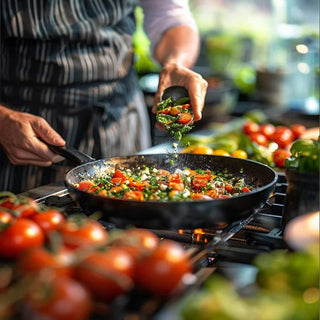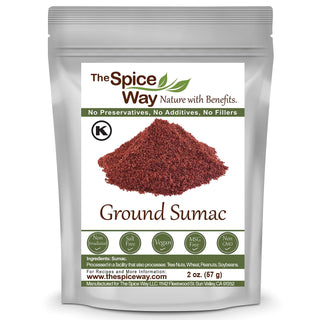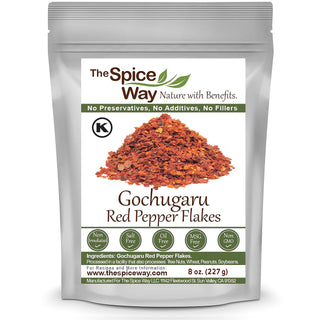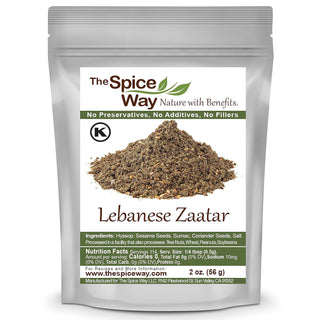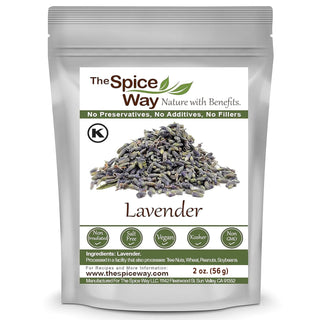Sumac is a bold, tangy red spice that brings brightness and depth to your meals — no lemon or vinegar needed. Ground from dried berries of the Rhus coriaria shrub, it’s a staple in Middle Eastern and Mediterranean kitchens. If you’ve ever tasted za’atar or seen that deep ruby-red dusting on hummus, you’ve likely encountered sumac.
In this guide, we’ll walk through how to use sumac in your kitchen — including techniques, flavor pairings, simple recipes, and pro-level ideas to elevate your everyday meals.
What Does Sumac Taste Like?
Sumac has a tart, lemony flavor with subtle earthy undertones. It brings acidity and brightness, like a dry citrus seasoning — think of it as lemon zest without the moisture.
Unlike vinegar or citrus juice, sumac integrates smoothly into spice blends and rubs. It delivers tang without overpowering, making it a great option when you want to brighten flavors while keeping textures intact.
Where Does Sumac Come From?
Sumac is made from dried berries of the Rhus genus, native to the Mediterranean and parts of the Middle East. The berries are dried and ground into a coarse, deep red powder.
Used for centuries, sumac has culinary roots in Levantine, Persian, and Turkish cooking — especially in dishes that balance acidity with savory herbs, roasted meats, and grains.
How Do You Cook with Sumac?
Sumac is one of those spices that works across meals — from morning toast to evening roasts.
Here are common ways to use sumac in everyday cooking:
-
Season Meats Before Roasting or Grilling
Dust chicken, lamb, or fish with sumac before cooking. The dry acidity balances rich, fatty cuts and builds depth in the crust.
-
Sprinkle on Salads for Tang
A light shake of sumac over greens, cucumbers, or tomatoes adds brightness — especially in salads with olive oil or creamy dressings.
-
Boost Yogurt-Based Dips
Stir into plain yogurt with olive oil and garlic for a quick, tangy dip or spread. Try it over roasted vegetables or as a sauce for grilled skewers.
-
Enhance Egg Dishes
Add sumac over scrambled eggs, poached eggs, or shakshuka just before serving. Its brightness balances savory yolks beautifully.
-
Add to Flatbreads and Pita
Sprinkle sumac over warm pita brushed with olive oil — or use it in za’atar spice blends baked into bread.
How Much Sumac Should You Use?
Start with 1/2 teaspoon per serving and adjust to taste. The flavor is bold and can overpower if overused. For dips and marinades, start small and add more once other ingredients are balanced.
Can You Replace Lemon with Sumac?
Yes — sumac can replace lemon juice or zest in recipes where a dry acid is more practical. It’s especially useful in:
-
Marinades (where you want flavor without liquid)
-
Roasted vegetables
-
Spice blends
-
Salads that would otherwise get soggy from juice
Simple Recipes Using Sumac
Let’s put it into action. These beginner-friendly ideas use pantry staples and require minimal prep.
1. Tomato-Cucumber Salad with Sumac
Ingredients:
-
2 cups chopped tomatoes
-
1 cucumber, diced
-
1/4 red onion, thinly sliced
-
1 tbsp olive oil
-
1/2 tsp sumac
-
Salt to taste
Instructions:
-
Combine all ingredients in a bowl.
-
Toss gently and serve chilled.
2. Sumac Chicken Marinade
Ingredients:
-
1.5 lbs chicken thighs or breasts
-
1 tbsp olive oil
-
1 tsp sumac
-
1/2 tsp paprika
-
1/2 tsp garlic powder
-
Salt and pepper
Instructions:
-
Mix spices and oil into a paste.
-
Rub onto chicken and let marinate 1–2 hours.
-
Grill or roast until cooked through.
3. Sumac-Spiced Popcorn
Ingredients:
-
6 cups freshly popped popcorn
-
1 tbsp olive oil or melted butter
-
3/4 tsp sumac
-
Sea salt to taste
Instructions:
-
Toss popcorn with oil, sumac, and salt.
-
Serve warm as a savory snack.
4. Yogurt-Sumac Sauce
Ingredients:
-
1 cup plain yogurt
-
1 tbsp lemon juice
-
1 tsp sumac
-
Salt to taste
Instructions:
-
Stir all ingredients together.
-
Serve as a dip, sandwich spread, or drizzle over bowls.
Can Sumac Go in Sweet Dishes?
Yes — you can use sumac in creative ways with sweet foods where a citrus contrast is welcome.
Try these:
-
Sprinkle on sliced apples or pears
-
Add a pinch to berry sorbet
-
Mix with sugar for a tangy rim on cocktails
The key is balance — use lightly to offset sugar and highlight tartness.
What’s the Difference Between Sumac and Za’atar?
Za’atar is a blend — typically made from sumac, thyme, sesame seeds, and salt.
Sumac is one of its key ingredients, bringing tang and color.
Use za’atar for complex seasoning. Use pure sumac when you want a simple, bright lemon note.
👉 If you're making your own za’atar blend, our Sumac Powder is the best place to start.
How to Store Sumac Properly
To keep sumac fresh and bold:
-
Store it in an airtight container
-
Keep it away from heat and light
-
Avoid letting moisture into the jar
Tip: Sumac’s flavor can fade over time — if it looks brown instead of deep red or smells muted, it’s time to restock.
Where Is Sumac Used Around the World?
Sumac is a global seasoning, though it’s most deeply rooted in Middle Eastern and Mediterranean cooking.
Regional Uses of Sumac:
-
Levantine Cuisine: Sprinkled on fattoush salad, hummus, and grilled meats
-
Turkish Cuisine: Used in piyaz (bean salad), kebabs, and lahmacun (flatbread)
-
Iranian Cuisine: Added to rice dishes and stews for sour contrast
-
Modern Fusion: Blended into tacos, grain bowls, and even sushi rice in Western kitchens
As chefs and home cooks look for new ways to balance flavor without acidity overload, sumac’s dry sourness fits right in.
What Sets The Spice Way’s Sumac Apart?
We source pure sumac from premium berries, ground in small batches and packed without fillers, salt, or additives.
What you’ll get:
-
🌿 Deep red color with no brown fillers
-
🍋 Tangy brightness without bitterness
-
🧂 No added salt, just 100% spice
-
🌍 Ethical sourcing from trusted growers
Want the best results? Start with the right base — get our sumac powder here.
Final Thoughts: Why Sumac Deserves a Spot in Your Spice Rack
Sumac is one of those spices that unlocks new layers in your cooking without needing fancy prep or rare ingredients. It’s bold but balanced, easy to use, and works with almost anything you’re already cooking.
Whether you’re tossing it on a salad, mixing it into dips, or rubbing it onto roasted chicken — sumac brings your food to life with a quick sprinkle.
👉 Try it tonight. Start with a pinch and taste the difference. We’ve got the freshest sumac spice waiting for you.


